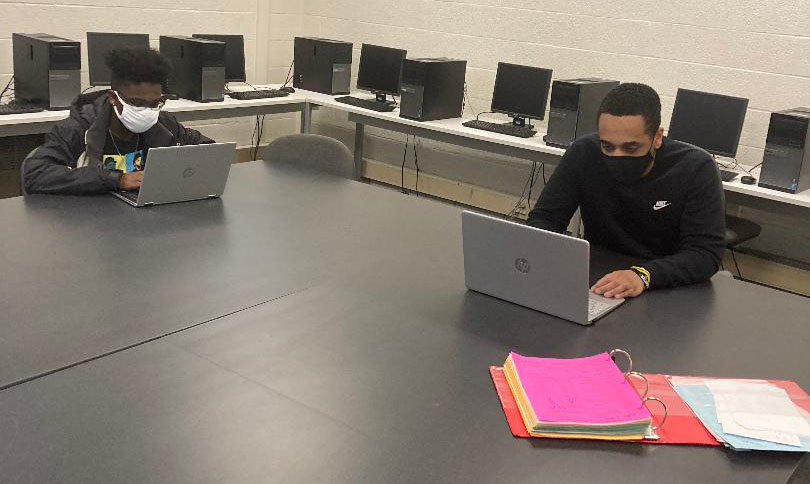Enrollment drops at AACC, nationwide
Journalism students D’Angelo Williams (left) and Jerryt Haley study together after their face-to-face class on Tuesday.
February 2, 2022
The number of full-time students enrolled in AACC this semester is down 11.3% compared with last spring.
Over a five-year span, the college lost 2,671 students, according to Vice President for Learning Tanya Millner. This semester, 7,688 students have registered for classes.
As a result of declining enrollment, the college has lost $3 million plus, she said.
Millner said college may not be a priority for some students.
“The priority may be trying to find a job [and] trying to take care of elderly loved ones or sick loved ones,” Millner said. “So, you know, oftentimes, for many students and their families college falls down in the list of priorities when there’s an emergency.”
Plus, she said, “We have a great deal of increasing competition from our four-year private institutions and our four-year public institutions. The student population is shrinking a bit, so we’re fighting for the same students.”
Student enrollment declined by approximately 12% in fall 2021 and 6% in fall 2020.
The decline in enrollment at community colleges is a national trend, according to the National Student Clearinghouse Research Center. According to an October report, community college enrollment nationwide fell by 14.8% since fall 2019.
Last fall, Millner said a drop in enrollment also could be because students are unwilling to take online classes.
However, the week before the spring semester began, the college cut 100-plus face-to-face classes because of underenrollment. In their place, AACC added 44 online sections.
“We’re trying to offer [in-person classes] to the best of our abilities, while keeping everyone as safe as possible,” Millner said.
AACC students said they weren’t surprised over the downward trend in community college enrollment.
“A lot of people realize that they don’t really want to do school,” first-year transfer studies student Halima Jama said. “[Instead] they want [pursue] small businesses and things that they want to do.”
Second-year nursing student Kaylin Turner said some students are not showing up because they don’t want to take online classes.
In the fall, the college offered approximately 20% of its classes in person. This semester, 43% of classes are face-to-face or hybrid, which means the classes are online with occasional on-campus meetings.












